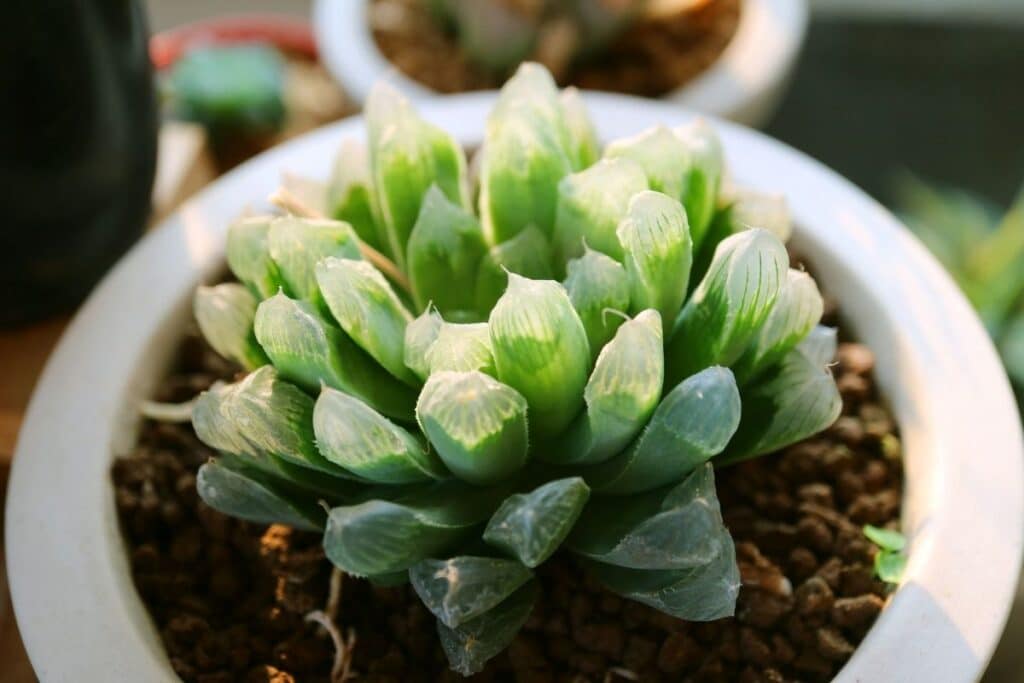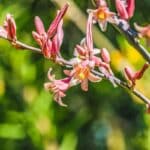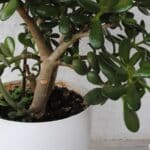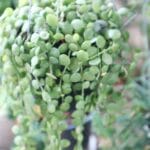Easy to care for and with diverse varieties, this plant is the perfect choice for any garden or succulent collection. Its adorable appearance and small size fit very well in interesting containers for indoor spaces. Learn how to care for this wonderful succulent.
What is Haworthia cooperi?
Haworthia cooperi, commonly known as Cooper’s aloe, is a diverse species of Haworthia from the family Asphodelaceae. The plant is native to the Eastern Cape Province in South Africa where it can be found growing in lowland plains (1,2).
This plant is quite the chameleon with many varieties resembling other haworthias. This is why it is sometimes called by other common names such as cathedral windows haworthia and cushion aloe.
Even the common name, Cooper’s aloe, is a misnomer because the plant is not actually an aloe, but it is named so because of its resemblance to the fleshy succulent plant.
H. cooperi is a slow growing succulent. It produces small clumps of fleshy, bluish green to light green rosettes. The leaves are variably patterned with translucent stripes at the tips called fenestrations. This structure is an adaptation to the harsh light conditions in its native habitat.
In some varieties, the whole leaves can become transparent. The leaves may also be tapering towards the tip, bristled, or completely round and smooth (3).
Although mainly grown for its attractive fleshy leaves, H. cooperi can bloom in spring through summer, producing a simple inflorescence of white flowers.
How to Grow and Care for Haworthia cooperi
Haworthia cooperi is one of the easiest succulents to grow. With the right requirements met, this plant can thrive and even propagate by itself. Read on to see some caring tips for this beautiful Haworthia cooperi plant.
Light
Although H. cooperi plants are well adapted to survive in full sun, they still prefer partial shade. In the wild, it shields itself from the sun by growing with only the translucent tips breaking the soil surface or by growing in the shadow of larger bushes and rocky outcroppings. When exposed to too much sunlight, the leaves will take on a whitish, yellowish, or reddish hue.
Their preference for shade makes them well suited to be houseplants. When growing these plants indoors, place them near a window or an area where it can get lots of filtered bright light. You can take it out in the morning to soak up the gentle light but take it back in the afternoon. (4)
Water
During warm seasons, H. cooperi plants will need regular watering. Make sure to let the soil dry out before the next watering. Overwatering is a major cause of problems for aloe vera plants, as they are prone to root rot when left sitting in waterlogged soil.
Come winter, these plants enter a rest period so only water to keep the leaves from drying up (4).
The dry area of its native land made these plants able to tolerate periods of drought. So, do not worry if you missed a couple or watering. But definitely do not overwater because these plants are prone to root rot when left to sit in water. Overhead watering should also be avoided.
Temperature and humidity
H. cooperi plants prefer average to warm temperatures with low humidity. These succulents are not cold hardy and can only tolerate down to 40o F but it will need a drop in temperature in winter as it enters its rest period. (4)
Soil
In the wild, these succulents grow in sandy and rocky soil that facilitates drainage. Imitate this environment by using a porous, well-drained potting mix that allows for wet soil to dry out quickly. Commercial succulent mix can be used, or you can make your own mix by combining 1:1 potting soil and sand or 1:1:1 potting soil, sand, and perlite (4).
Fertilizer
Because these plants are small and slow growing, they do not really require fertilizer, but it can benefit from the extra nutrients especially during the active growing season. Note that these plants also enter a short dormant stage in summer so hold back on feeding at that time (4).
Propagate
The easiest way to propagate H. cooperi is through offsets. To do so, simply remove a rooted offset from the parent and plant in a separate small pot. Take extra care for this new plant until it is well established (4).
When propagating Haworthia cooperi, aside from offsets, the plant can also be propagated through leaf cuttings and seeds.
Common pests and diseases
Haworthia cooperi is generally resistant to many pests and diseases, making it a hardy plant than other succulents. However, common issues may include mealybugs and aphids, which can be addressed with insecticidal soap or neem oil.
Additionally, protecting Haworthia cooperi from extreme temperature fluctuations and providing adequate ventilation can help prevent fungal disease.
Regular inspection and proper care contribute to the overall health of the plant, minimizing the risk of pests and diseases.
See more: How to propagate succulents
The Best Varieties of Haworthia Cooperi You Can Grow
Haworthia cooperi is a very variable species with many types. Oftentimes, they can even look like other haworthias. Here are some of the best H. cooperi varieties (5,6).
Haworthia Cooperi var. cooperi
This is the type variety produces rosettes of fleshy, swollen, lance-shaped leaves that are bluish green and slightly translucent at the tips. Along the margins and the underside are soft white bristles.
Haworthia Cooperi var. dielsiana
This is a common variety in cultivation. It features fleshy, blue green leaves with rounded translucent ends. It has smooth margins with no bristles and distinctly large venations.
Haworthia Cooperi var. leightonii
This variety is a prolific grower, forming clumps of yellow green rosettes that takes on a reddish color when exposed to full sun.
Haworthia Cooperi var. picturata
Another vigorous grower, this variety forms impressive, large clumps of smooth, rounded, yellow-green leaves with translucent tips.
Haworthia Cooperi var. pilifera
This variety is the most common and widespread. It features short, stubby, bluish green windowed leaves with very small, bristles.
Haworthia Cooperi var. truncata
This variety prolifically forms clumps of very pump, grape-like rosettes of round, blue-green, windowed leaves.
Haworthia Cooperi var. venusta
The prettiest of the varieties, this plant features wide bluish green windowed leaves that are covered in silvery white fuzz and soft bristles.
FAQs
How do you know if Haworthia is thirsty?
To gauge if a Haworthia is thirsty, observe the leaves for signs of dehydration, such as wrinkling or a slightly translucent appearance. Additionally, the topsoil should be dry before considering watering, as Haworthias prefer well-draining soil and benefit from allowing the soil to dry out between watering sessions.
Is Haworthia Cooperi rare?
Haworthia cooperi is not considered extremely rare, but certain varieties and cultivars may be less common and sought after by collectors. Availability can vary depending on the specific type within the species.
References
Reference list
(1) Bayer B. “Volume 4, Chapter 1: That squadron of Haworthias from Albertinia eastwards“. Haworthia Updates. 2011.
(2) “Name Search=Haworthia cooperi Baker”. Tropicos.org. Missouri Botanical Garden.
(3) Afra. A. “The Succulent Manual: A guide to care and repair for all climates“. Andrea Afra. 2018.
(4) Breuer I. “Hints on cultivation of Haworthias and Gasterias“. Haworthia.info. 2018.
(5) von Staden L., Klopper R.R., Manning J.C.”Haworthia cooperi Baker“. Red List of South African Plants. South African National Biodiversity Institute (SANBI). 2014.
(6) Eggli U. “Illustrated Handbook of Succulent Plants: Monocotyledons“. Springer Science & Business Media. 2012. PP. 205-206
Close
Photo by depositphotos.com/shinylion







